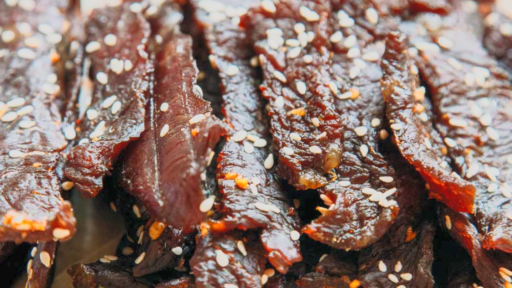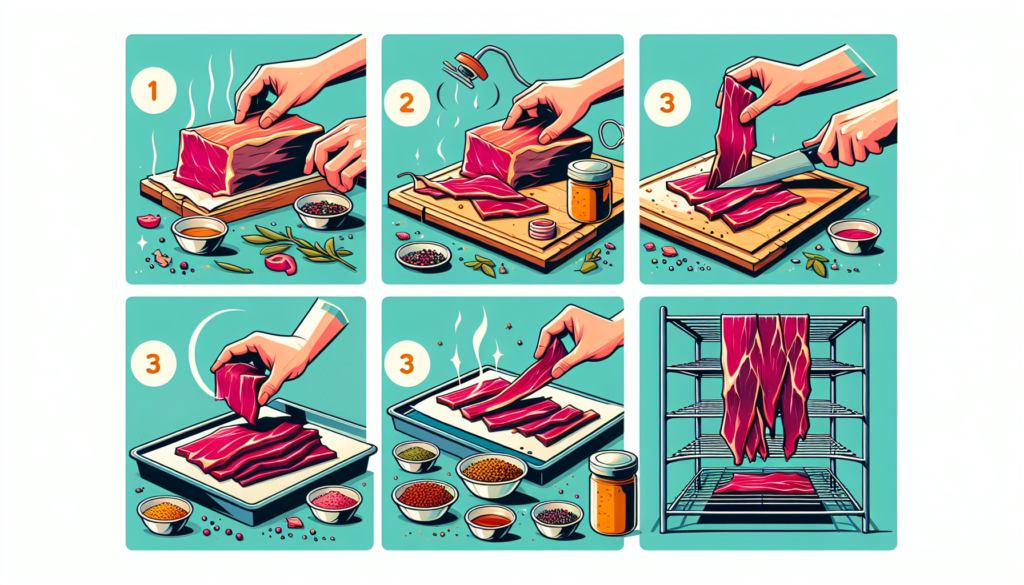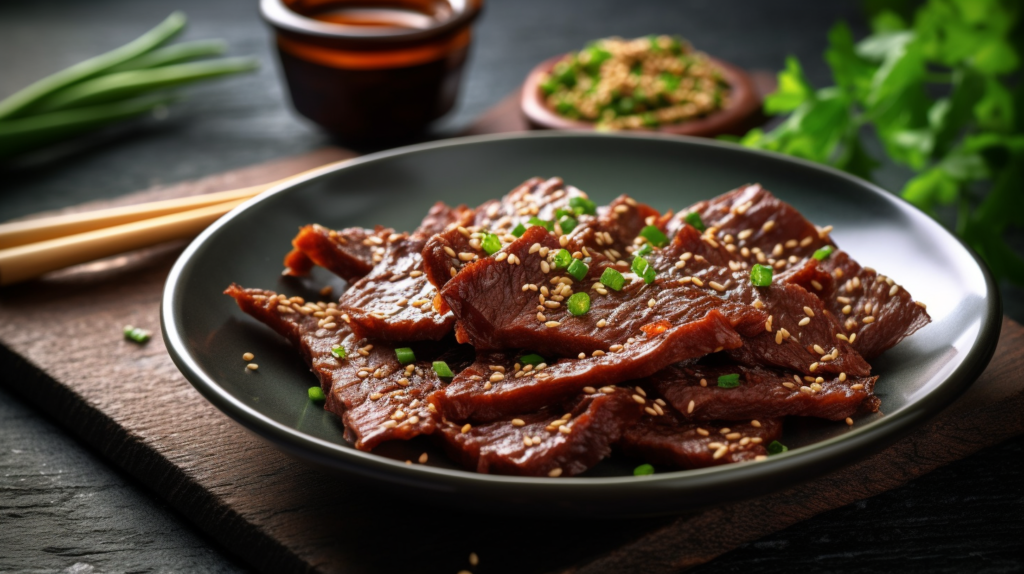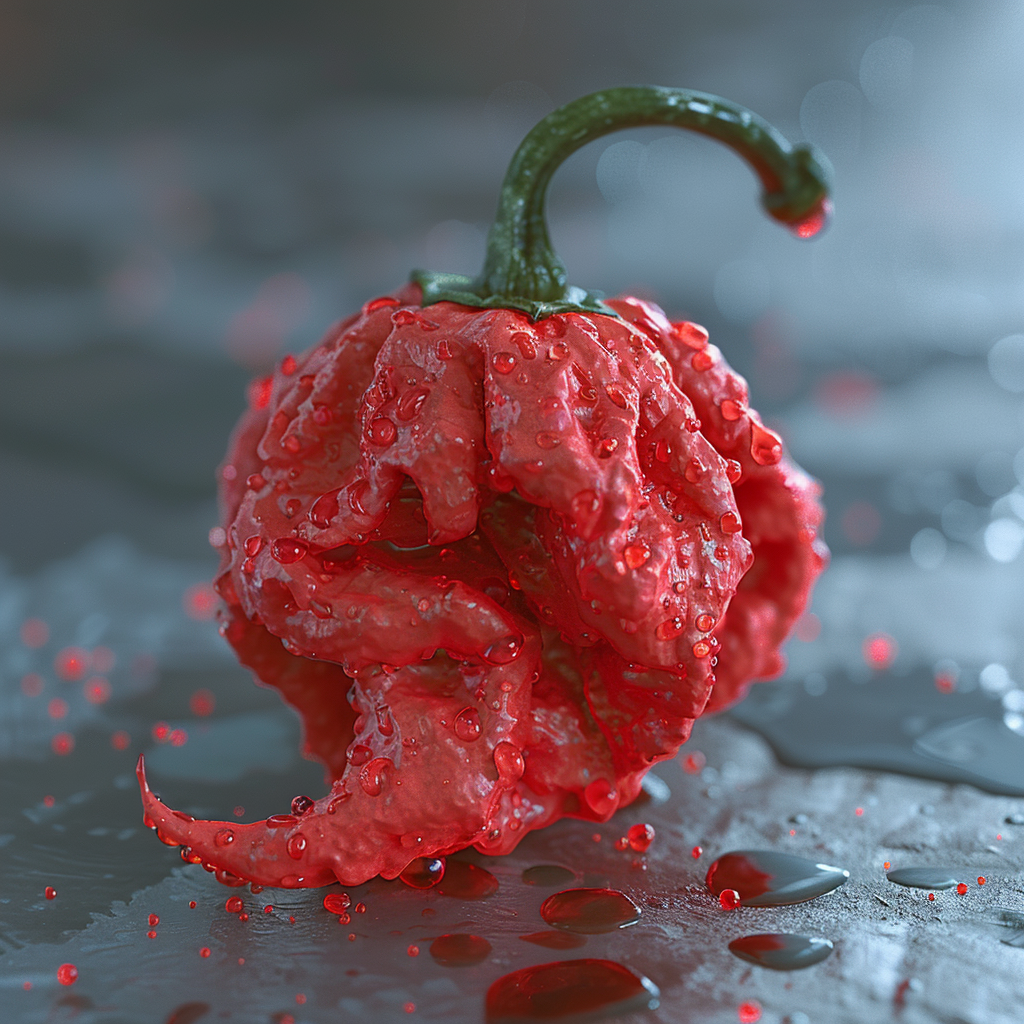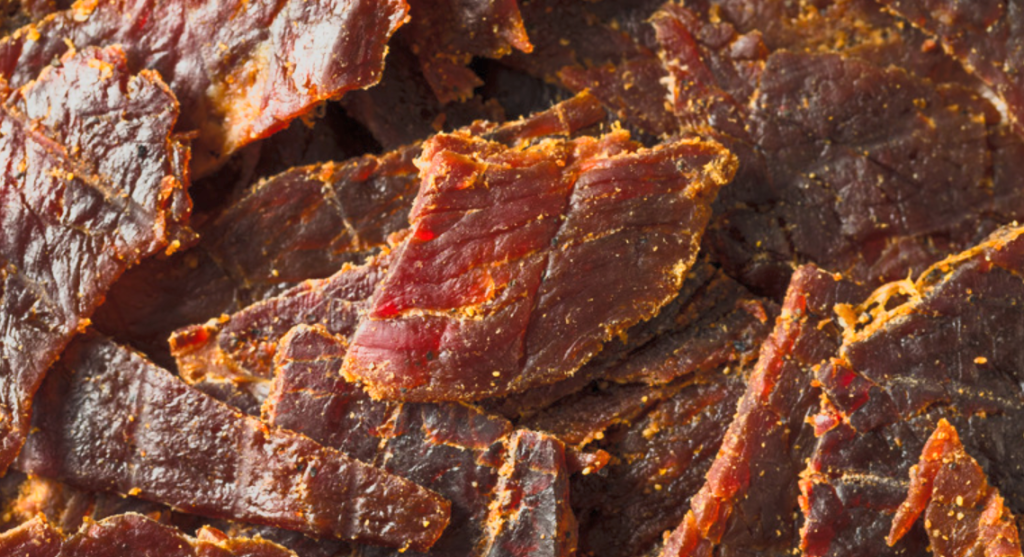
Known for its rich flavor, convenience, and high protein content, beef jerky is an extremely popular alternative to potato chips, tortilla chips, pretzels, etc. This guide to beef jerky will explore everything from its history and types to how it’s made and the best ways to enjoy it. Whether you’re a long-time jerky lover or curious to try it for the first time, this guide has something for everyone.
History of Jerky
The tradition of drying meat to preserve it dates back thousands of years to ancient civilizations. The word jerky itself stems from the Quechua word ch’arki, which means dried, salted meat. This preservation method allowed early civilizations to store meat for long periods, essential for survival and sustenance during times when fresh food was scarce. Over the centuries, many cultures developed their own versions of jerky, leading to the wide variety of styles and spices used in the beef jerky we enjoy today.
Types of Jerky
Beef jerky comes in many forms, each with its unique flavors, textures, and preparation techniques. Some of the most popular types include:
- Traditional Jerky: This type is characterized by its dry texture and typically includes simple seasonings like salt, pepper, and garlic.
- Soft Jerky: Softer than traditional jerky, this type is characterized by its tender and juicy cuts of meat. Softer jerky is normally sweeter than traditional jerky.
- Teriyaki Jerky: Infused with a sweet and savory teriyaki sauce, this jerky offers a moist texture and rich flavor profile.
- Hot & Spicy Jerky: For those who enjoy a kick, hot & spicy jerky includes various chili peppers and spices to dial up the heat.
- Smoked Jerky: Smoke-flavored or genuinely smoked over wood chips, this jerky boasts a distinct smoky taste reminiscent of barbecue.
How Beef Jerky is Made
Making beef jerky involves a simple process. First, high-quality beef is sliced thin to ensure even drying. These slices are then marinated in a mixture of seasonings and sauces to infuse flavor. After marinating, the beef is dried using one of several methods. Traditional drying techniques involve air drying in the sun or over a low heat, while modern methods may use a dehydrator or oven to achieve a consistent and controlled drying environment. The goal is to remove enough moisture to prevent bacterial growth, but retain enough to keep the jerky chewy and flavorful.
Health Benefits and Nutritional Information
Beef jerky is not only tasty but also offers several health benefits thanks to its nutritional profile. It’s high in protein, which is essential for muscle repair and growth, making it a popular snack among athletes and fitness enthusiasts. Beef jerky is also low in fat and contains various vitamins and minerals, including iron, zinc, and B vitamins. However, it’s important to be mindful of the sodium content, as some versions can be quite high. Opting for brands with lower sodium and no added preservatives is a healthier choice.
How to Enjoy Beef Jerky
Beef jerky is incredibly versatile, making it easy to enjoy in various ways. It’s perfect as a standalone snack, especially when you’re on the go or need a quick protein boost. You can also pair it with other foods like cheese, nuts, and dried fruits for a satisfying mini meal. For the more adventurous, try chopping up some jerky and adding it to salads, soups, or even baked goods for an unexpected burst of flavor.
In conclusion, beef jerky is a delicious, convenient, and nutritious snack option that has stood the test of time. With its rich history, variety of flavors, and numerous health benefits, it’s no wonder beef jerky continues to be beloved by many. Whether you prefer traditional, spicy, or exotic flavors, there’s a jerky out there for everyone.


